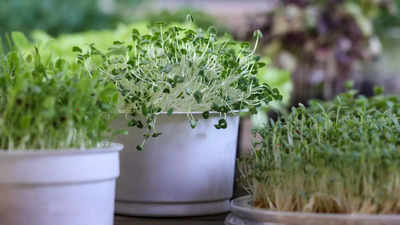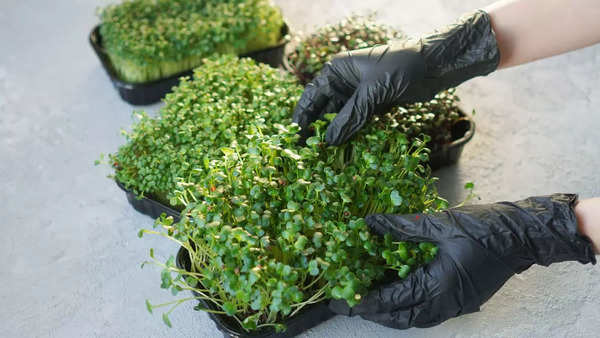Welcome To Latest IND >> Fastest World News
Chia seeds have quickly become one of the best superfoods, and are ‘oh-so-versatile’. From helping with gut health, to bloating, and from better hair to better skin, people claim that Chia seeds can do it all.
And while most people prefer having Chia seeds in the seed form where they are soaked in water, enlarged, and then consumed, not many know there is another way to have Chia seeds, in the form of microgreens.
That’s right! A
chia seed plant
can be grown easily at home in a few simple steps, and the microgreens can be cut up and harvested to add to salads, dips, yogurt, curd, and more. It is super easy and budget-friendly to grow the plant, and to put a cherry on top, you DO NOT need soil, sand, or even a pot to grow these microgreens.
So, without much ado, here we list out the perfect steps to grow the chia plant microgreens at home.
Gather the material
First, gather the materials needed, starting with Chia seeds, about 20-30 grams. Then, get an old jar, bottle, or anything that is tall, and the seeds can be spread out on it evenly. Next up, you need some tissues, soft cloth, water spray bottle, and a window or balcony where you get atleast 3 hours of direct sunlight.
Starting the plant
To start, take 2-3 tablespoons of Chia seeds, and add them to a glass of water. Keep them aside overnight, or for 2-3 hours, and let them enlarge and soak as much water as possible.
Then, the next day, take a bottle, or an old ceramic jar, or whatever surface you wish to grow the microgreens on. Suppose you take an old jar, then just clean it nicely making sure there is no dust on the surface.
Once the cleaning is done, spread a few tissues over the jar, and then spray them with water so that they stick to the ceramic jar nicely.
Make sure that the tissues are just damp enough to stick the seeds, but not so wet that the tissues start to break apart.
Now it is time to spread the seeds all over. You can either throw some dry, unsoaked chia seeds onto the damp tissues, or you can lightly spread the soaked, enlarged seeds on the tissue paper.
If you choose the latter, owing to the slimy nature of the chia seeds after being soaked, they will stick better to the tissues and not fall apart.
Now, once the seeds are spread out, gently mist them with water. The seeds will begin to absorb the moisture and develop a gel-like coating within a few minutes.
Then, put this jar in the balcony or near a window so that it can get about an hour or two of sunlight. Between the 2 hour time, mist the seeds with water once again.
Now, continue this step for atleast a week. Check on your chia seeds daily and mist them with water as needed to keep the surface damp. But be careful not to overwater, as standing water can lead to mold or rotting of the chia seeds which will result in zero microgreens coming out.
When will you see the first greens?
In best conditions, the seeds should begin to sprout within 3-5 days, and once sprouting begins, you will notice tiny white roots emerging from the seeds.
Continue the occasional misting, and make sure they receive atleast 2 hours of sunlight everyday. After about 10-15 days, the leaves would have grown enough to be plucked just a little to encourage growth. In fact, as they are ready to be harvested, it is best to cut them just 5-8 centimetres below the leaves so that they continue growing from there.
What if the leaves stop?
If by any chance the leaves stop growing after 2-3 harvest, this might be an indication that the chia plant needs extra nutrition. So, just add some water-soluble fertiliser to the spray bottle, mix well, and then mist it all over the tissue as well as the plant stems.
Through the fertiliser, the Chia plant will get some extra nutrition, and the microgreens will start sprouting again within the next 5-7 days.
Watch: How to make Chia Seeds & Coconut Milk Smoothie
Latest IND



